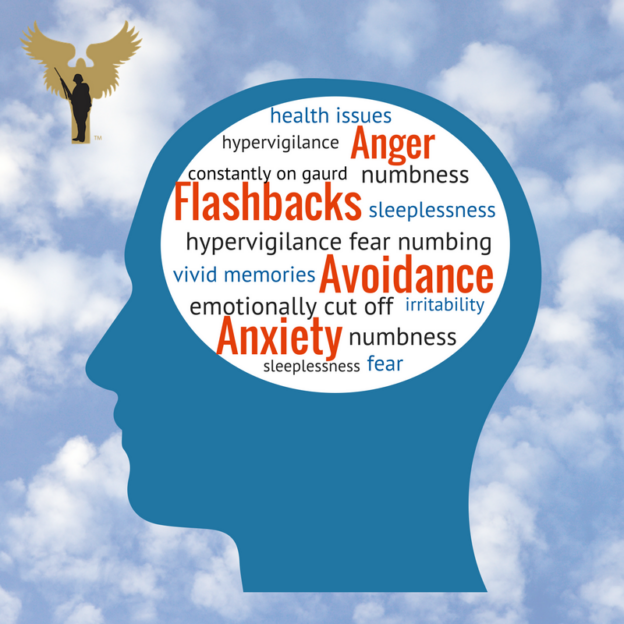Understanding Mood Disorders and Fear Responses
Bipolar Disorder and
anxiety represent a category of mental health conditions characterized by significant changes or disturbances in mood that can disrupt an individual’s daily functioning. These illnesses encompass an array of conditions, including depression, bipolar disorder, seasonal affective disorder, and more. Each is distinct, with specific characteristics and symptoms, yet they all share an element of irregular mood fluctuations as their common denominator. These disturbances can range from extreme elation or mania to profound sadness and hopelessness, depending on the type of disorder in question.
Fear response is a fundamental emotional reaction to perceived threats or danger, often heightened in individuals with bipolar disorders and anxiety.
It serves as a critical survival mechanism, alerting and preparing individuals to confront or escape imminent hazards, a process often influenced by bipolar disorders and anxiety. Under normal circumstances, the fear response provides essential protection against potential threats, triggering heightened awareness, an increase in heart rate, rapid breathing, and enhanced reflexes. However, when this response becomes constantly activated, it can culminate in persistent anxiety or chronic fear. This heightened nervousness can disrupt everyday life and overall well-being, requiring medical attention and suitable interventions.
Comprehending the Dual Nature of Emotional Instability
Emotional instability is characterized by two separate but interlinked facets: rapid fluctuations between different emotional states and a heightened sensitivity to emotional stimuli. These two components work together to foster an environment of inconsistency, wherein the individual’s emotional responses can often seem unpredictable or irrational. Rapid fluctuations between emotions can manifest as dramatic mood swings, where a person may experience extreme highs and lows over a short period. Here, the instability does not pertain to the emotions themselves, but to the rapid alternation between them, hence the term ‘mood swings.’
Heightened sensitivity to emotional stimuli refers to the individual’s predisposition to react intensely to situations or experiences that might otherwise elicit minimal emotional response. This could include an exacerbated reaction to a minor setback or hardship, excessive fear, or anxiety in response to perceived threats or sudden and severe feelings of sadness or anger without discernible cause. This sensitivity can make it challenging for those experiencing it to regulate their emotions effectively, leading to situations where their responses seem out of proportion to the triggering event. These two components of emotional instability, while problematic on their own, often work in tandem, making it difficult for affected individuals to maintain emotional equilibrium.
The Connection Between Emotional Swings and Heightened Nervousness
Emotional instability often manifests as frequent mood swings, creating a climate of uncertainty within an individual. This unstable behavior can include rapid shifts from elation to profound sadness, agitation to serenity, and anxiety to contentment. These oscillations, often marked by their severity and rapid onset, can disrupt an individual’s ability to function cohesively in their everyday life. However, the impact of these mood swings extends further than mere disruptions, linking themselves closely with increased levels of nervousness and anxiety.
Heightened nervousness, characterized by incessant worry, restlessness, and physical symptoms such as a rapid heartbeat and tense muscles, often shares a reciprocal relationship with emotional swings. The unpredictability of mood oscillations can catalyze bouts of anxiety, further escalating feelings of nervousness. Conversely, this constant state of apprehension can provoke more severe and frequent mood swings, demonstrating a correlation between these two afflictions. This intimate interplay underscores the necessity for comprehensive treatments that would address both conditions simultaneously to effectively alleviate the discomfort experienced by those grappling with emotional instability and chronic worry.
The connection between emotional swings and heightened nervousness is multifaceted, encompassing several aspects:
• Emotional instability: Individuals experiencing frequent mood swings often struggle with emotional stability. This instability can lead to feelings of uncertainty and can disrupt everyday life.
• Rapid shifts in emotions: Mood swings may involve sudden changes from one extreme emotion to another, such as happiness to sadness or calmness to anxiety. These rapid shifts further exacerbate the individual’s sense of instability.
• Increased levels of nervousness and anxiety: The unpredictability of these mood oscillations can cause a surge in anxious feelings and nervousness. In turn, this constant state of worry can trigger more severe mood swings, creating a vicious cycle that perpetuates both conditions.
• Physical symptoms: Heightened nervousness is not just an emotional condition; it also manifests physically through symptoms like rapid heartbeat and muscle tension. These physical manifestations further compound the distress experienced by individuals dealing with these issues.
• Reciprocal relationship: Emotional swings and heightened nervousness share a reciprocal relationship – each condition fuels the other, leading to increased severity over time if left unchecked.
In light of this intricate connection between emotional instability and heightened nervousness:
• Comprehensive treatments are necessary: Addressing only one aspect will not suffice; comprehensive treatment plans should simultaneously tackle both conditions for effective relief.
• Tailored approach required: Given the unique interplay between these two afflictions within each individual, personalized treatment strategies are crucial for optimal outcomes.
With a better understanding of how emotional swings influence heightened nervousness (and vice versa), healthcare providers can develop more effective therapeutic approaches for those affected by these conditions.
Symptoms and Diagnosis of Emotional Instability and Chronic Worry
Emotional instability, often characterized by unpredictable mood swings, is typically diagnosed through extensive psychological evaluations. Patients may exhibit symptoms such as sudden shifts in mood, impulsive behavior, difficulty maintaining relationships, and frequent bouts of anger or frustration. These symptoms can vary in intensity and can be triggered by stressors at work, home, or in personal relationships. Diagnostic criteria also include a pattern of unstable intense interpersonal relationships, and paranoia related to stress.
Chronic worry, an excessive, long-term type of anxiety, has its own set of specific symptoms which include restlessness, fatigue, difficulty concentrating, irritability, muscle tension, and sleep disturbance. The diagnosis is usually established by the presence of excessive anxiety and worry, occurring more days than not for at least six months, about a number of events or activities. It’s important to note that these worries are often difficult to control. The weight of constant worry and fear may also lead to physical symptoms such as headaches, migraines, or unexplained aches and pains, thereby exacerbating the situation.
Treatment Options for Mood Oscillations and Persistent Tension
Mood oscillations, also known as mood swings, and chronic tension or anxiety can significantly interfere with a person’s life. Thankfully, there are numerous therapeutic interventions available, each designed to better equip a person in managing and mitigating their emotional instabilities. Psychotherapy, specifically cognitive behavioral therapy (CBT) and dialectical behavioral therapy (DBT), can be extremely effective. CBT helps individuals to identify, challenge, and alter negative thought patterns and behaviors, whereas DBT focuses on acquiring new skills to manage painful emotions and improve relationships.
Pharmacotherapy or medication management can serve as another treatment avenue. Mood stabilizers, antidepressants, and anti-anxiety medications have proven beneficial for many with severe mood fluctuations and prolonged tension. It’s integral for patients to work closely and honestly with healthcare providers to determine the best medicinal option for individual needs and circumstances. Lifestyle alterations including regular physical activity, a balanced, nutritious diet, adequate sleep, and mindfulness techniques like meditation and yoga, can also be part of a comprehensive treatment plan. These holistic practices are known to reduce stress and improve overall emotional health.
Impact of Emotional Fluctuations and Chronic Fear on Quality of Life
The burden of persistent emotional instability, coupled with chronic fear, often results in significant impairments in multiple domains of life. Key manifestations can include diminished work performance, strained relationships, and an undermined sense of well-being. When fluctuating mood states and sustained fear become the norm rather than the exception, these might erode an individual’s capacity to function in a constructive and fulfilled manner in various settings.
Additionally, this ongoing emotional turmoil may exacerbate the physical health malaise, as the body and mind are intrinsically interlinked entities. Emotional stressors can result in somatic complaints ranging from gastro-intestinal disorders to cardiovascular irregularities. Chronic fear, anxiety, and mood disorders could alter the body’s neurochemistry and further lead to a decreased immune response, raising the risk of chronic diseases. Therefore, the quality of life can be drastically impacted by these psychological disturbances, necessitating timely intervention for better outcomes.
Managing Mood Swings and Constant Apprehension: Tips and Strategies
Tackling the intricacies of mood swings and continual apprehension requires a crucial understanding of the rightful techniques that are helpful in managing these difficulties. One essential strategy is to maintain a regular schedule for sleep, meals, and activities. This approach assists in providing stability and predictability, which essentially lessens the likelihood of mood fluctuations. Moreover, exercise also plays a significant role, with numerous studies confirming its positive effects on mood regulation and reduction in anxiety levels.
Another critical aspect involves promoting a healthy mind by engaging in mindfulness or other relaxation techniques. Mindfulness helps in anchoring the mind to the present moment, reducing the tendency to dwell in past regrets or future anxieties. Furthermore, incorporating therapeutic techniques such as cognitive-behavioral therapy or dialectical behavior therapy also aids in gaining control over emotional instabilities and perpetual unease. Undergoing these therapies helps individuals to identify triggers, understand and regulate their emotions, and apply effective coping strategies. Implementing these practical and tested strategies provides a solid foundation in managing mood swings and relentless apprehension.
Resources Available in Manalapan for Those Struggling with Emotional Irregularities and Perpetual Unease
Manalapan, in Monmouth County, New Jersey, has a notable repertoire of resources designated to assist those grappling with emotional instability and chronic anxiety. Numerous service providers operate within its premises who specialize in the diagnosis and treatment of mood disorders and fear responses. Ranging from psychotherapy sessions to mental health awareness programs, these resources aim to mitigate the distress associated with emotional irregularities and incessant unease. Local organizations also regularly conduct seminars and educational workshops, enabling the community to better comprehend maladaptive emotional swings and heightened nervousness.
Recognizing the importance of holistic treatment, Manalapan offers recreational facilities and nature therapy programs as supplementary resources. Green spaces and sport centers provide opportunities for structured physical activity that is known to positively influence mood patterns and fear responses. Libraries in the town maintain a collection of self-help books on emotional instability, helping individuals understand and combat their personal struggles. Additionally, there are dedicated helplines and online forums at the disposal of residents, providing counsellor-guided assistance round the clock. The availability of these resources amalgamates the town’s commitment to foster a supportive environment in managing mental health issues effectively.
Personal Stories: Manalapan Locals Share Their Experiences with Mood Alterations and Enduring Stress
Lisa, a school teacher in Manalapan, first noticed her symptoms of emotional instability and persistent stress after the birth of her first child. She described a wave of uncharacteristic emotions which made her susceptible to drastic mood changes, often moving from euphoria to deep sadness within the span of a few hours. The enduring stress eventually took a toll on her mental health and personal relationships, leading her towards isolation and constant nervousness due to the fear of triggering these emotional swings in public settings.
On the other hand, John, a local businessman, suffered from chronic worry that often interfered with his daily functions. He shared insights about his journey, facing battles against racing thoughts and restlessness throughout the night, thereby leading to serious sleep deprivation. His constant apprehension about future events caused a negative impact on his work performance and personal obligations. Despite these challenges, both Lisa and John found solace in acknowledging their conditions, and progressing towards measures that could aid in coping with their emotional fluctuations and perpetual stress.
Moving Forward: Overcoming Emotional Inconsistency and Prolonged Anxiety in Manalapan
Developing a holistic understanding of emotional inconsistencies and prolonged anxiety is a critical first step in managing these conditions. It requires not only the acknowledgement of the issue but also the acceptance that it could be a lifelong battle for many individuals. It’s crucial to understand that variation in emotions and chronic anxiety are not character weaknesses but medical conditions that require professional attention. In Manalapan, there’s a growing awareness of these challenges, reflected in the enriched local support system and resources available for dealing with emotional and psychological concerns.
The path to managing emotional instability and enduring stress is often marked with self-awareness, acceptance, professional help, and consistent work on maintaining mental wellness. Both psychotherapy and medication have shown solid results in treating these conditions. Cognitive-behavioral therapy, for example, has a positive track record of helping individuals understand their triggers and develop coping mechanisms. Alongside, medications like SSRIs and SNRIs can help regulate mood and reduce the symptoms of anxiety. In Manalapan, a network of skilled therapists, medical professionals, and support groups can offer help to those on this challenging journey.




